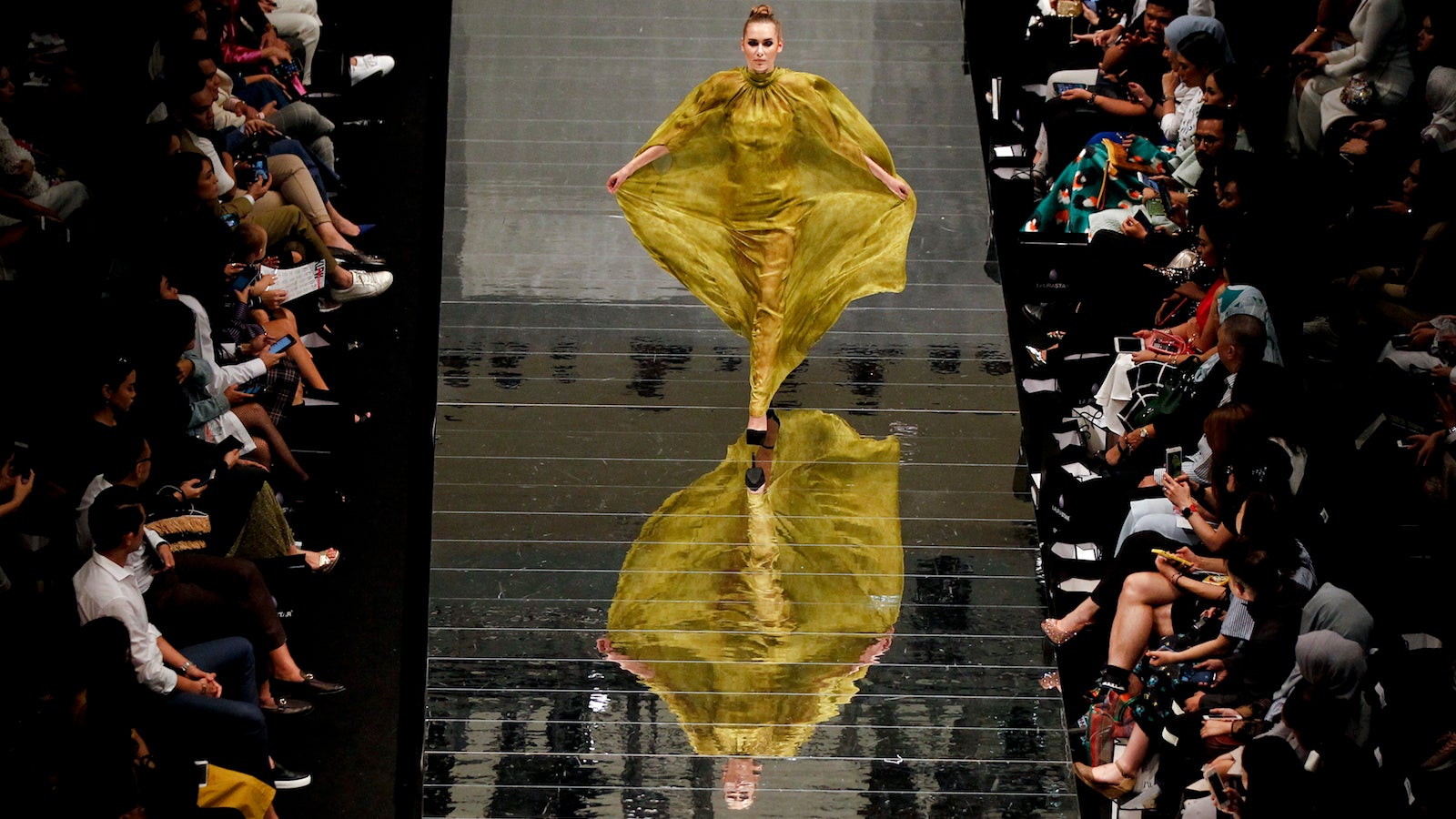The future of trend prediction will come from tech innovators, not fashion designers
Modern technology is unleashing creativity—not stifling it.


Modern technology is unleashing creativity—not stifling it.
The $3 trillion global apparel market, which makes up 2% of the world’s GDP, is reliant upon being able to guess the latest trends and fads of the season. For example, this fall has a penchant for the bright plaids of the 1970s, and we’ll also see the return of the out-of-vogue babydoll dresses and scrunchies of the early 1990s. Just as quickly as these trends come, they go. So being able to predict the ebbs and flows of consumers’ whims can mean multimillion-dollar differences in annual earnings.
As trends shift, the ability to apply real-time and even predictive insights is a huge advantage. Leveraging this information to predict the next big thing can differentiate the winners from the losers in the retail industry. And technology can help.
Whether it’s white sneakers or this season’s omnipresent red hue, the human minds that envision these looks can be enhanced by the analytical capabilities of machines. Data is now being leveraged to inspire designers and minimize risk. When designers sit down to create their next lines, their designs can be informed by real, actionable data, not just by their own intuition.
Cognitive computing, a type of artificial intelligence system, analyzes massive amounts of data to make connections between different elements of information. Just like the human brain can process visual images, video, fashion reviews, social media and even weather forecasts, technology can do that on a huge scale, enabling it to better predict demand for products, for example.
At IBM, our Watson cognitive system—the one that defeated two Jeopardy! champs a few years ago—has been used to correctly predict the colors and patterns that will dominant consumers’ closets. The democratization of trend analysis could have a profound effect on businesses. Typically, fast-fashion retailers rely on trend analysis companies to tell them which up-and-coming notions are most worthy when it comes to the cost of production; most brands start conceptualizing and designing products for the new season over one year prior to the actual selling season.
Fashion houses typically hire outside firms and talent to browse hundreds of blogs and study thousands of images from shows, social media, and fashion archives to understand trends and draw inspiration. It can take many months—and an enormous expense—to uncover the insights that AI is able to offer in merely seconds. Trend-analysis firms like WGSN can cost businesses upwards of $50,000 a year in subscription fees, but cognitive technology could allow designers to accumulate internal and external data in house.
For example, JASONGRECH, an Australian couture designer, leveraged the power of cognitive technology to take an entirely new creative approach to his designs, influencing his choice of fabrics, color palettes, and textures. He partnered with IBM for Melbourne Fashion Week 2016 by utilizing cognitive technology—via Watson on IBM Cloud—with the aim to infuse something new into his designs.
Ten years’ worth of runway fashion images and look books from specific designers were analyzed and distilled, along with real-time social-media buzz from Twitter, Instagram and Pinterest. He accelerated the information gathering phase of his designs by 600% compared to his previous season. For years, JASONGRECH’s designs were typically fashioned in dark color schemes. But when using Watson’s visual-recognition technology to identify and categorize consumers’ opinions on colors, patterns, fabrics, and more, JASONGRECH predicted the industry’s shifting preference towards pastels. He incorporated these colors into his designs—an element he would not have considered before—and it became a focal point of his line. The information gathering and analysis process took about four days, as opposed to the 28 days typically required via manual efforts. And, more importantly, sales spiked significantly.
In another example, Indian designer duo Falguni & Shane Peacock worked with Watson to inspire the design of their brand’s new collection, which is based on the history of Bollywood fashion. They analyzed 600,000 images spanning London, Paris, Milan, and New York fashion weeks for insights into high-end couture and coupled it with 8,000 Bollywood images from social-media sites and images from Bollywood posters from the past four decades. This data combined with an analysis of 100,000 print swatches allowed them to generate novel prints with the trendiest colors of the season. The result? They created three unique dresses based solely on Watson’s insights that became signature designs of their latest fashion collection.
Cognitive technologies don’t replace the creative process; they are proving to enhance and accelerate it. While trends fade, new creative ideas inspired by unique combinations of those trends are timeless.